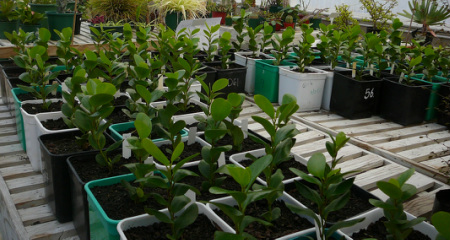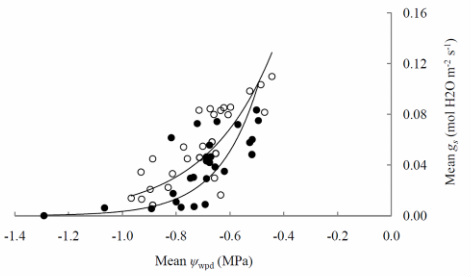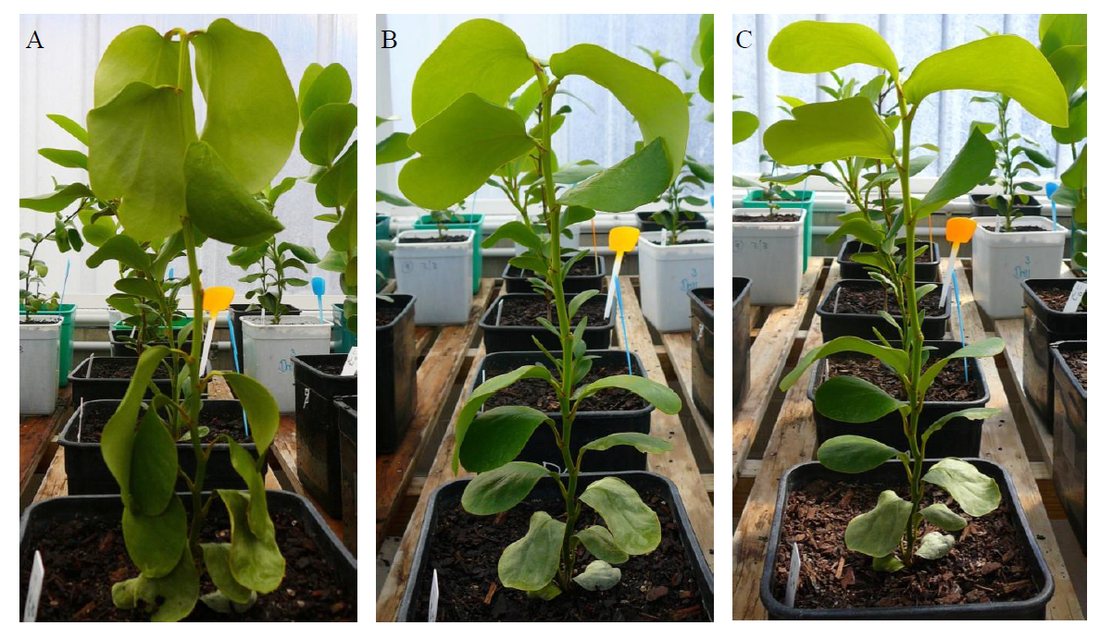Canopy soil usually exists in relatively small volumes and therefore does not store a lot of water. Even after rain events, this resource quickly dries out.
What does this mean for epiphytes? Presumably, it means that they need to be able to cope with frequent drought and to use water during the short time that it is present. This topic was part of my MSc research:
I found that puka and kapuka can tolerate a low level of drought stress but their key response to extended drought was to effectively shut-down. The graph below shows the stomatal conductance (y axis, high conductance = high photosynthesis, low conductance = low photosynthesis) as water potential (x axis) dropped. The filled circles are results from puka and the open symbols are kapuka.
The shut-down is a useful way to avoid damage but the key is to be able to re-activate normal function when water becomes available (after rain or fog). Griselinia lucida (puka) showed a very quick response after 70 days in drought. The following photos show the same plant on day one (A) after rewatering, day two (B) and day three (C).




 RSS Feed
RSS Feed
